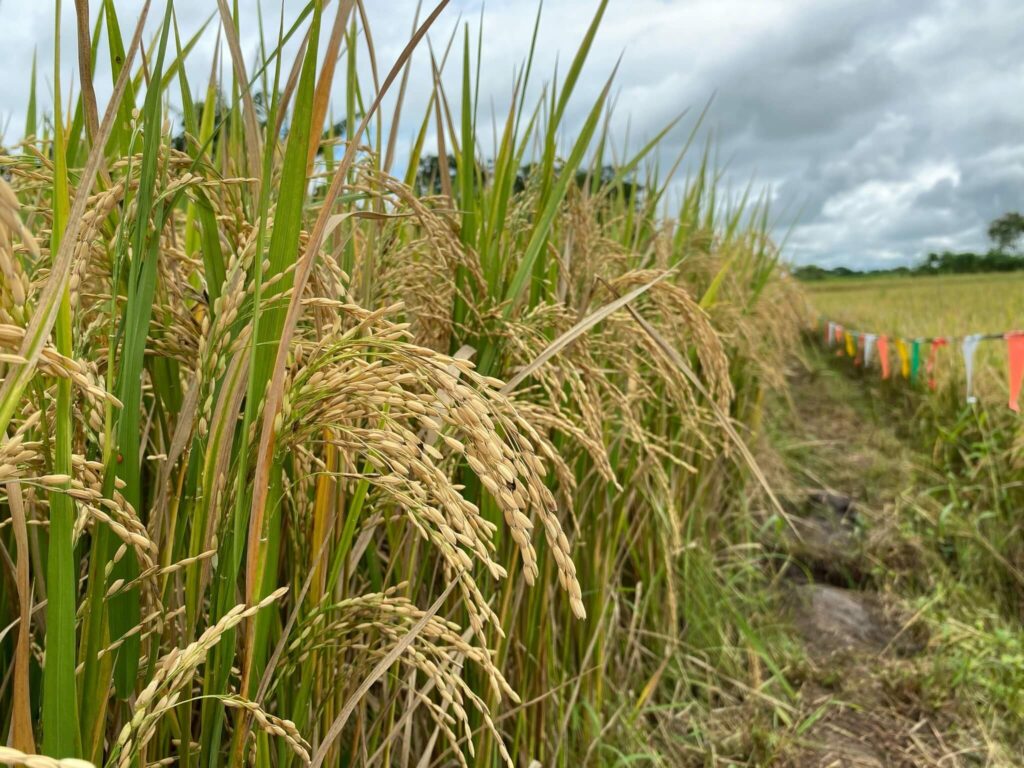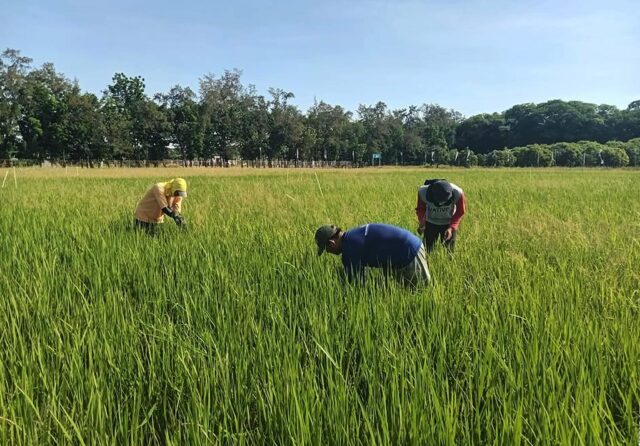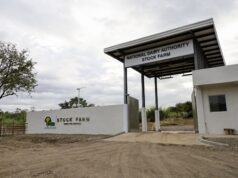SCIENCE CITY OF MUÑOZ (PIA) — Scientists from the Philippine Rice Research Institute (PhilRice) are studying how silicon, a naturally occurring mineral in soil, can enhance rice stem strength and reduce lodging—a major cause of yield loss during strong winds and heavy rains.
In the study titled “Silicon Mapping: A Potential Tool to Assess Lodging Resistance of Rice,” Jan Nico Lazaro and his team evaluated 101 rice lines and varieties to determine how effectively they absorb silicon and how this absorption influences stem sturdiness.
“Rice that absorbs silicon tends to develop stronger stems, which can improve its resistance to lodging,” Lazaro said.
To obtain precise measurements, the researchers analyzed silicon content in the flag leaves of rice plants during the reproductive stage.

They used a push meter to test stem strength and employed Scanning Electron Microscopy with Energy Dispersive X-ray (SEM-EDX) technology to detect silica deposits on the leaves.
Results indicated that NSIC Rc 536 had the highest pushing resistance, indicating stronger stems, while Rc 298 had the highest silicon content at 18.37 percent by weight but showed lower stem strength.
According to the team, these findings indicate that factors beyond silicon, such as genetics and plant structure, also influence lodging resistance.
“Silicon is not yet classified as an essential nutrient, but it’s been shown to help cope with stress,” Lazaro explained.
The team is now moving toward testing the varieties under field conditions to verify their performance in real farming environments.
Conducted under controlled screenhouse conditions, the study forms part of the PhilRice Rice Diversity Panel (RDP) initiative, which identifies rice lines with desirable traits such as efficient silicon uptake.
The researchers are also preparing field trials in lodging-prone areas to verify how well these varieties perform under actual farm conditions.
The team also collaborated with the Philippine Center for Postharvest Development and Mechanization or PHilMech for the SEM-EDX analysis, which enabled them to produce detailed images and measurements of silica deposits on the surfaces of rice leaves.
This research gained recognition after winning the 2nd Best Poster Award at the 25th Scientific Conference and Annual Meeting of the Philippine Society of Soil Science and Technology Inc., held at Visayas State University in Leyte.
If proven effective in field trials, silicon mapping could serve as a valuable tool for rice breeders and scientists in developing sturdier, stress-resistant rice varieties—helping Filipino farmers achieve more resilient crops and higher yields. (CLJD/CNG, PIA 3-Nueva Ecija)





